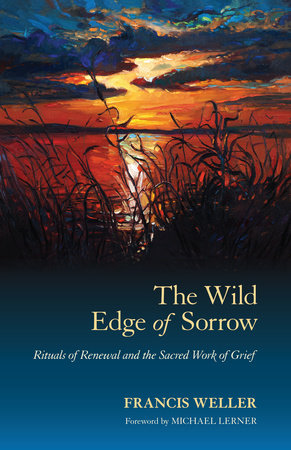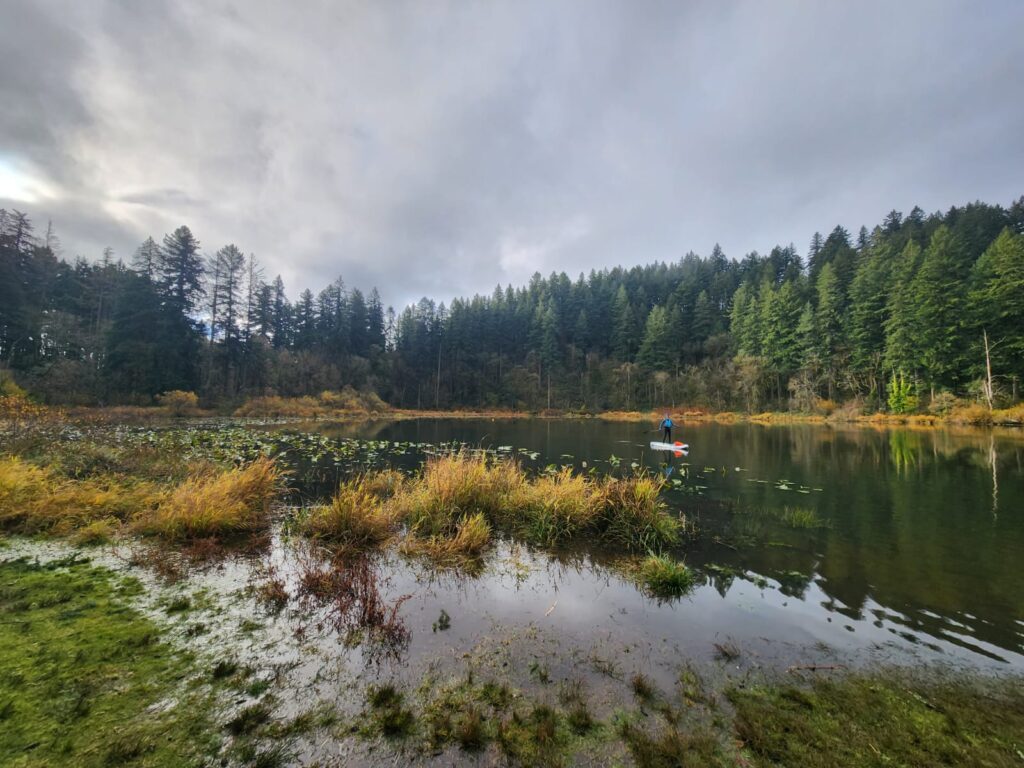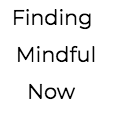
Moment of Mind
Welcome dear reader to December’s newsletter. I’ll be talking about death, loss, and grief this month. If you’re finding the level of overwhelm particularly taxing at the moment related to grief, or loss, you may want to set this newsletter aside and return to it later when you feel more resourced.
This month is an invitation to nourish the whole brain-body system when it’s experiencing grief by creating a ceremony of letting go and receiving that has meaning to you. Here I share the ceremony that I’m in the midst of as an example to encourage exploration of what feels right for your system.
In late October I went to check on my mom at her apartment because she’d not been answering her phone when I called. As soon as the manager opened the door for me, we both realized that she’d transitioned beyond the body.
That day set off a series of unexpected grieving-related emotions that continue to show up at any time of the day or night, regardless of the activity.
There was the grieving that I had known to expect: the loss of the physical presence of a person. My memory brought forward our last visit where my mom had pressed her cheek against mine in a half-hug-snuggle. It was the only time I could remember as an adult that this had happened. I remember feeling surprised and grateful in that moment. It has a new layer of appreciation now.
The unexpected emotions include:
- relief for her that she was no longer suffering in the mental fear loops of her mind from mental illness,
- release from hypervigilance of needing to check on her regularly,
- pain of loss of the mother I never had…and will never have in her,
- unexpected insights about her choices as I made discoveries among her items,
- blossoms of trauma memories, and more.
My mother’s actions, combined with poverty, were the primary source of complex trauma I experienced as a child. Her actions came from her own unhealed trauma. Trauma is a wound which can be physical, emotional, or both in nature. When wounds are repeated over time we adopt coping mechanisms to address them. This is when the trauma is deemed “complex.” The adaptations we develop to protect from trauma, for example people pleasing or fighting or avoidance, have their own side effects. These are healthy survival patterns that can stop being useful. Disassociation for example is helpful in getting things done. And all that compartmentalizing to avoid feeling can pile up and then squeeze out the sides unexpectedly – this is when it may no longer be helpful.
Trauma was not the only thing that happened in my childhood though. While there are themes of abuse, there are also themes of support, of love, of learning, and of care. It’s important to me to honor those as much as I work to heal the harm. This is a strength-based perspective where just like I am not only bad things that happened to me, my life is also not solely negative experiences.
This fall I have been taking the Integrated Somatic Trauma Therapy Certification program, and so found lecture upon lecture discussing experiences I was having in real time. I will revisit some of that this upcoming year as I found the training supportive. It was helpful in identifying resources we all have that help us heal from trauma – even when we cannot spend time with a therapist.
The invitation this month as we move toward the winter solstice on the 21st is to notice what areas of your life might there be loss or grief and honor these through an intentional release practice. You can start this simply by inquiring what loss are you grieving that can use support? Set an intention to explore and see what comes to mind.
The ceremony I’ve been completing has two phases (noticing and releasing). It uses two elements (fire and earth). And involves two main body actions – writing down (expression) and digging in the earth (creating). The intention of all of it is nourishment.
The first 30 days involves the following:
- Each day I write a brief (a few words) painful memory in need of healing on a scrap of cloth my mother owned. Example: eating out of garbage cans.
- Next to that first memory I then write a second memory of childhood that’s supportive, joyous, or for which I feel appreciation. Example: mom working odd jobs to pay for food.
- Support the body. As I revisit these memories there’s often intense emotions that arise. When this happens I use the physical resources we all have available to feel the sensations, release through crying or shaking or sometimes yelling, and then hug the body with my arms, rocking, or other support. Very intense ones I save for working with a somatic therapist. Since this can sometimes be more than I can do in one day there have been times where I’ll do a batch of several, in order to take breaks between. I also take naps.
- I store each scrap of paper with its balance of needs-healing and nourish-holding memories in a separate bag so I know these are ready for the second phase.
Fire is my favorite element for release. On the winter solstice I will reach the end of the 30 days of phase one and shift into the second half of the ceremony for welcoming growth. The next 30 days involves the following.
- I will take my fire bowl outside and each day burn one of the pieces of cloth.
- As I do I likely will say aloud to the land, to all the witnessing beings, gratitude for their support and honoring of the memory of my mother’s life. I will speak to her spirit too.
- I will save the ashes.
- Depending on what I’m noticing I will then bury the ashes in a place that has meaning to me as part of transferring this pain into the life cycle of the earth. This will happen either daily, at intervals, or all at once. I plan to listen in those days for direction.
- I will journal about areas of growth where I’m inviting in healing and new experiences.
A friend reminded me that this grieving process is a transitional, liminal space of discovery and the unknown. Our society conditions us that control is feasible (despite all indications to the contrary, including birth and death). Aiming for control means our mind skips over how normal uncertainty and change are (they are constants). We put extensive effort into holding people, situations, age, the body in place as static as though if we could do that we would find a permanent happiness or peace experience. Emotions fluctuate on purpose; nothing can bring about a permanent emotional experience. For me, ceremony is a way to support the brain-body system as the unknown unfolds.
While none of us can know for sure what happens when we cross that threshold of animating a flesh and bone self-organizing system called a body to being released from it, we can honor the temple that housed us during our physical time on earth. This honoring can include our own temple through nourishment.
I’d love to hear what ceremonies you’re generating,
Much love,
Tia
Love for Your Inner Science Activist Nerd

A friend gifted me this book on grief that serendipitously I’d read something about in a colleague’s recent newsletter. I am only in the first chapter and taking it slowly. I feel it’s worthy of sharing here because of the lesson already contained in that first chapter. It invites us to be in apprenticeship to grief.
My experience of this society is that death is treated as though it’s not inevitable. As though we can control when it happens. As though there are right and wrong ways to die. Better and worse ways. Except that “right/wrong” and “better/worse” are all judgments held by the perceptions of people alive. The ones not having experienced death yet.
This is partly, in my view, because that same conditioning of control rests on a belief that we are separate from life, rather than made of it. As though we are the temporary body, rather than the infinite spiritual force that animates it. The same force that keeps going. All of this conditioning in my opinion makes grief more challenging because likely we resist feeling out of a belief that we can’t handle it (like most emotions).
I wonder if being in apprenticeship to grief is a bit like what happened when I recognized that the mental narrator that says ‘I’m me’ and builds an identity out of actions the brain acquired through conditioning couldn’t possibly be what beats the heart in this body. It couldn’t possibly be the source because the mental narration of identity formation is also a biological process. There’s no to-do list for my day where “I” run the billions of chemical reactions that create saliva, snot, tears in the eyes, breathing, muscle contractions and so on. That’s all life force. That’s all animation and energy in motion. When this understanding dawned it became less scary to recognize the animal-ness of this body with its rhythms, its ups and downs, and its natural changes. There was a little less fear of aging, for example, even as the conditioned patterns to avoid it continue to show up (hello favorite wrinkle cream).
Since this is new territory for me I can’t speak to the fullness of the book yet. What I most appreciate is that grief is pulled out of hiding, out of shadow, to be embraced. Like Internal Family Systems parts work, we can honor the grieving process like we might honor the joy process, the excitement process, the anger process, and so on. Here is a description from the author of what they mean.
“How do we learn to carry our grief and not collapse or turn away in denial? How do we come to see grief as vital and necessary and not something only to be endured? To achieve this shift requires a re-visioning of grief, not as an event in our lives – a period of mourning – but as an ongoing conversation that accompanies us throughout life. Grief and loss are with us continually, shaping our walk through life, and in some real way, determining how fully we engage our lives. This shift in perspective invites us into a prolonged period of learning the ways and styles of grief. In essence, we are asked to take up an apprenticeship with sorrow. An apprenticeship with sorrow leads us to the heart of loss. Soul invites us repeatedly to take up this endeavor and be reshaped by its multiple demands.” (page 4)
The author names five gates of grief and the importance of working with one another in community, as well as the natural world, in being in apprenticeship to grief. I will reflect on these gates in future newsletters.
My gratitude to friends and loved ones as I navigate this is unbounded. Friends have sat with me while I do bizarre logistics (paying for the after-death process can be expensive to the living it turns out). Small text messages of “thinking of you” have been unexpectedly supportive. And I appreciate a small group of friends who are willing to participate with me in various ceremonies as part of community building. Thank you if you’ve been part of this.
Get Your Park Groove On

A new park to me is Fallen Leaf Lake in Camas, Washington. As it sounds, the main feature is a 15 acre lake that appears to be a major wildlife support based on the number of birds there. Friends of mine tell me that turtles are common on the many logs in the summer. I was visiting as part of safety paddling for a few cold water swimmers. The sky reflected in the water surrounded by the bowl of trees was awe-inducing.
While there is limited parking and a gate that seems to indicate it’s closed, when it’s actually open, the other amenities are supportive. The route from the parking to the picnic shelter is wheelchair accessible. You can reserve the shelter on weekends for events. I have not yet completed the trail around the lake so will report back when I have.
Upcoming Events & New Offers
I am revisiting my plans for the winter and spring about what to offer. I’m putting the perimenopause course on hold and instead considering beta testing a negotiation course and one on nourishment that incorporates resourcing from the somatics course I am completing. Stay tuned!
| Copyright © 2019-2022, Finding Mindful Now LLC, All rights reserved. www.findingmindfunow.com, originally published on MailChimp with information on current offerings. Some images or content lightly revised since initial publishing. |
